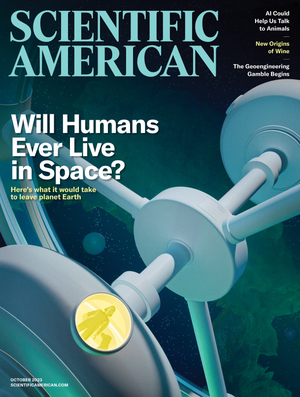| | | | Did you notice our new look? We're excited to present our redesign with the October issue of Scientific American featuring a new logo, fresh color schemes, updated graphics styles, and more. This month's cover story explores what it would take for humans to live in space and whether those obstacles can be overcome. We also examine the use of geoengineering to manage the climate crisis, the prehistory of wine, and how AI could revolutionize our understanding of animal communication. | | | | | | Humans in Space, Geoengineering, Prehistory of Wine Explained | | | | | | | | It's Time to Engineer the Sky | | Global warming is so rampant that some scientists say we should begin altering the stratosphere to block incoming sunlight, even if it jeopardizes rain and crops. | | | | | | | | | | | | | | | | | | | | | |
To view this email as a web page, go here.
You received this email because you opted-in to receive email from Scientific American.
To ensure delivery please add specialoffers@scientificamerican.com to your address book.
Unsubscribe Email Preferences Privacy Policy Contact Us







Comments
Post a Comment